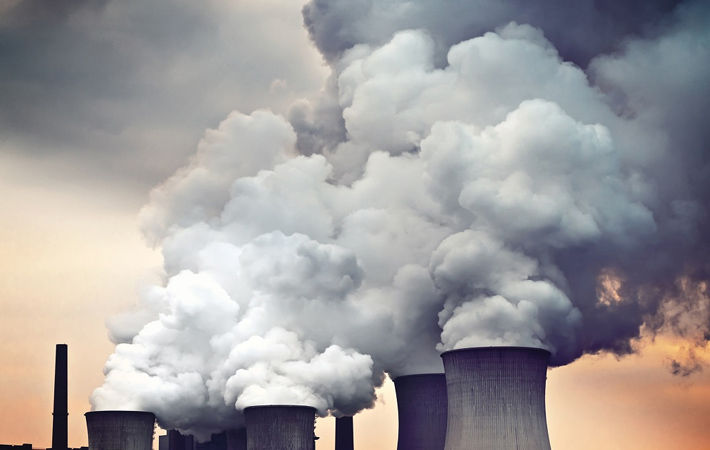Interviews
UNCTAD urges EU to consider climate change mechanism's impact on trade
16 Jul '21
3 min read

Pic: UNCTAD
The European Union (EU) carbon border adjustment mechanism (CBAM) announced on July 14 could change trade patterns in favour of countries where production is relatively carbon efficient but do little to mitigate climate change, according to the United Nations Conference on Trade and Development (UNCTAD), which urged the EU to consider deploying CBAM flanking policies capable of narrowing, and eventually eliminating, gaps between developed and developing countries.
A report by Geneva-headquartered UNCTAD recently shows the CBAM’s potential implications on international trade, carbon dioxide emissions, income and employment for countries inside and outside the EU, with a special focus on developing and vulnerable countries.
The CBAM is expected to introduce new carbon dioxide emissions-cutting measures transitionally in 2023 and finalize them before 2026.
“Climate and environmental considerations are at the forefront of policy concerns, and trade cannot be the exception. CBAM is one of these options, but its impact on developing countries also needs to be considered,” UNCTAD acting secretary general Isabelle Durant said.
The report confirms that introducing the CBAM would reduce part of the carbon leakage produced by the different climate change ambitions between the EU and other countries, an UNCTAD press release said..
Carbon leakage refers to the relocation of production to other countries with laxer emissions constraints for costs reasons related to climate policies, which could lead to an increase in their total emissions.
The report says several of the EU’s trading partners exporting goods in carbon-intensive sectors have raised concerns that the CBAM would substantially curtail their exports, but these changes may not be as drastic as some fear.
Exports by developing countries across the targeted carbon-intensive sectors would be reduced by 1.4 per cent if the CBAM is implemented with a price of $44 per tonne of embedded carbon dioxide emissions, and by 2.4 per cent if it is implemented with an $88 per tonne price, the report shows.
However, the effects would vary significantly by country depending on their export structure and carbon production intensity.
In both scenarios, developed countries, as a group, wouldn’t suffer export declines since many tend to employ production methods that are less carbon intensive in the targeted sectors than many developing nations.
“The CBAM would generate a similar gap between developing and developed countries in terms of welfare. In both cases, developed countries would fare better than developing ones,” the report states.
With a CBAM based on a carbon price of $44 per tonne, the income of developed countries would rise by $2.5 billion, while that of developing nations would fall by $5.9 billion, according UNCTAD’s analysis.
However, developed countries would experience a higher welfare loss of $51 billion from the initial introduction of a carbon price of $44 per tonne, driven by losses in the EU, while developing countries would gain $1 billion in the absence of the CBAM.
Increased carbon prices would significantly reduce carbon emissions in the EU, but the world’s largest trading bloc’s exports would decline, the report says.
Although the CBAM would be effective in reducing carbon leakage, its value in mitigating climate change is limited, the report says, as the mechanism would cut only 0.1 per cent of global carbon dioxide emissions.
A report by Geneva-headquartered UNCTAD recently shows the CBAM’s potential implications on international trade, carbon dioxide emissions, income and employment for countries inside and outside the EU, with a special focus on developing and vulnerable countries.
The CBAM is expected to introduce new carbon dioxide emissions-cutting measures transitionally in 2023 and finalize them before 2026.
“Climate and environmental considerations are at the forefront of policy concerns, and trade cannot be the exception. CBAM is one of these options, but its impact on developing countries also needs to be considered,” UNCTAD acting secretary general Isabelle Durant said.
The report confirms that introducing the CBAM would reduce part of the carbon leakage produced by the different climate change ambitions between the EU and other countries, an UNCTAD press release said..
Carbon leakage refers to the relocation of production to other countries with laxer emissions constraints for costs reasons related to climate policies, which could lead to an increase in their total emissions.
The report says several of the EU’s trading partners exporting goods in carbon-intensive sectors have raised concerns that the CBAM would substantially curtail their exports, but these changes may not be as drastic as some fear.
Exports by developing countries across the targeted carbon-intensive sectors would be reduced by 1.4 per cent if the CBAM is implemented with a price of $44 per tonne of embedded carbon dioxide emissions, and by 2.4 per cent if it is implemented with an $88 per tonne price, the report shows.
However, the effects would vary significantly by country depending on their export structure and carbon production intensity.
In both scenarios, developed countries, as a group, wouldn’t suffer export declines since many tend to employ production methods that are less carbon intensive in the targeted sectors than many developing nations.
“The CBAM would generate a similar gap between developing and developed countries in terms of welfare. In both cases, developed countries would fare better than developing ones,” the report states.
With a CBAM based on a carbon price of $44 per tonne, the income of developed countries would rise by $2.5 billion, while that of developing nations would fall by $5.9 billion, according UNCTAD’s analysis.
However, developed countries would experience a higher welfare loss of $51 billion from the initial introduction of a carbon price of $44 per tonne, driven by losses in the EU, while developing countries would gain $1 billion in the absence of the CBAM.
Increased carbon prices would significantly reduce carbon emissions in the EU, but the world’s largest trading bloc’s exports would decline, the report says.
Although the CBAM would be effective in reducing carbon leakage, its value in mitigating climate change is limited, the report says, as the mechanism would cut only 0.1 per cent of global carbon dioxide emissions.
Fibre2Fashion News Desk (DS)
Popular News
Leave your Comments
Editor’s Pick
































-Ltd..jpg?tr=w-120,h-60,c-at_max,cm-pad_resize,bg-ffffff)





.jpg?tr=w-120,h-60,c-at_max,cm-pad_resize,bg-ffffff)
.jpg?tr=w-120,h-60,c-at_max,cm-pad_resize,bg-ffffff)






